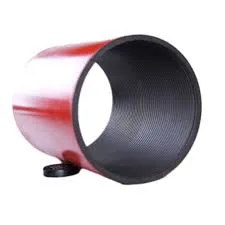- Afrikaans
- Albanian
- Amharic
- Arabic
- Armenian
- Azerbaijani
- Basque
- Belarusian
- Bengali
- Bosnian
- Bulgarian
- Catalan
- Cebuano
- Corsican
- Croatian
- Czech
- Danish
- Dutch
- English
- Esperanto
- Estonian
- Finnish
- French
- Frisian
- Galician
- Georgian
- German
- Greek
- Gujarati
- Haitian Creole
- hausa
- hawaiian
- Hebrew
- Hindi
- Miao
- Hungarian
- Icelandic
- igbo
- Indonesian
- irish
- Italian
- Japanese
- Javanese
- Kannada
- kazakh
- Khmer
- Rwandese
- Korean
- Kurdish
- Kyrgyz
- Lao
- Latin
- Latvian
- Lithuanian
- Luxembourgish
- Macedonian
- Malgashi
- Malay
- Malayalam
- Maltese
- Maori
- Marathi
- Mongolian
- Myanmar
- Nepali
- Norwegian
- Norwegian
- Occitan
- Pashto
- Persian
- Polish
- Portuguese
- Punjabi
- Romanian
- Russian
- Samoan
- Scottish Gaelic
- Serbian
- Sesotho
- Shona
- Sindhi
- Sinhala
- Slovak
- Slovenian
- Somali
- Spanish
- Sundanese
- Swahili
- Swedish
- Tagalog
- Tajik
- Tamil
- Tatar
- Telugu
- Thai
- Turkish
- Turkmen
- Ukrainian
- Urdu
- Uighur
- Uzbek
- Vietnamese
- Welsh
- Bantu
- Yiddish
- Yoruba
- Zulu
female threaded coupling
Understanding Female Threaded Coupling A Comprehensive Overview
Female threaded coupling is an essential component in various industries, providing the necessary connection for pipes, tubes, and fittings. Understanding the intricacies of female threaded couplings is vital for engineers, plumbers, and anyone involved in projects requiring fluid or gas transfer.
What is Female Threaded Coupling?
Female threaded coupling refers to a type of connector designed with internal threads that allow another fitting, pipe, or tube with external threads to be screwed into it. This design creates a secure and tight connection, which is crucial in preventing leaks in plumbing, hydraulic systems, and more. Typically made from materials such as brass, stainless steel, or plastic, female threaded couplings come in various sizes and pressure ratings to accommodate different applications.
Applications of Female Threaded Coupling
Female threaded couplings find utility in numerous sectors. In plumbing, they are used to connect two pipes, ensuring the efficient flow of water. In industrial settings, these couplings are prevalent in hydraulic systems, where they help transport fluids. They are also found in HVAC systems, where they connect various ventilation components. Additionally, in the oil and gas sector, female threaded couplings facilitate safe and reliable transport of hydrocarbons through pipelines.
Types of Female Threaded Couplings
Depending on the application, there are several types of female threaded couplings designed for various purposes. The most common types include
1. Standard Couplings These are the most used types, designed for general connections between two male-threaded components. 2. Reducing Couplings These fittings are used to connect pipes of different diameters. They feature a larger end for a thicker pipe and a smaller end to accommodate a thinner pipe.
female threaded coupling

3. Union Couplings Unions are a specific type of coupling that allows for easier disconnection. They consist of three parts two female-threaded ends and a center nut, enabling quick assembly and disassembly without cutting pipes.
4. Compression Couplings These couplings utilize a compression mechanism to create a seal. They are particularly useful in low-pressure applications, where high levels of security are not required.
Benefits of Using Female Threaded Coupling
One of the primary advantages of female threaded couplings is their ease of installation. The internal threading allows for straightforward screwing without the need for complicated tools, reducing assembly time and effort. Furthermore, they create a reliable seal that minimizes the risk of leakage. When paired with the right locking mechanisms, such as sealing tapes or compounds, these couplings can withstand significant pressure variations, making them suitable for a wide range of applications.
Challenges and Considerations
While female threaded couplings offer numerous benefits, there are challenges to consider. Proper sizing and compatibility are crucial; mismatched threads can lead to leaks and system failures. Moreover, the selection of materials is essential based on the environment and substances being transported. For instance, corrosive substances may require stainless steel or plastic couplings to ensure durability.
Conclusion
Female threaded couplings are integral to many systems that require safe and efficient fluid transfer. Through a detailed understanding of the types, applications, and benefits of these couplings, professionals can make informed decisions, ensuring the success of their projects. Whether in domestic plumbing or large-scale industrial applications, the reliability of female threaded couplings plays a critical role in system efficiency and safety.
-
Tubing Pup Joints: Essential Components for Oil and Gas OperationsNewsJul.10,2025
-
Pup Joints: Essential Components for Reliable Drilling OperationsNewsJul.10,2025
-
Pipe Couplings: Connecting Your World EfficientlyNewsJul.10,2025
-
Mastering Oilfield Operations with Quality Tubing and CasingNewsJul.10,2025
-
High-Quality Casing Couplings for Every NeedNewsJul.10,2025
-
Boost Your Drilling Efficiency with Premium Crossover Tools & Seating NipplesNewsJul.10,2025







